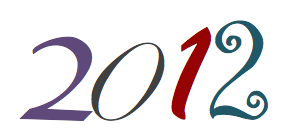This blog post was written by our intern, Madeleine Hatley.
Hi, everyone! My name is Madeleine Hatley and I am a senior public relations major at the University of Texas at Austin. Coming from the small town of Paris, Texas, I was ready to head to a larger city with more growth opportunities and also more things to do other than take pictures in front of the world’s third largest Eiffel Tower complete with a cowboy hat. During my spare time, I love seeing live music, discovering new restaurants, and taking my adorably fluffy Corgi, Oliver, to Zilker Park.
 Prior to joining the Ketner Group team, I mainly worked in politics. My past experience has taught me that internships are vital to figure out what best suits your personality and what path you want your career to follow.
Prior to joining the Ketner Group team, I mainly worked in politics. My past experience has taught me that internships are vital to figure out what best suits your personality and what path you want your career to follow.
My first internship was with Texas Gov. Greg Abbott at Texans for Greg Abbott. I mainly worked on his social media, press releases regarding the governor and event scheduling. It was a great first internship in that I learned how to further develop my writing skills and got the opportunity to represent a single client via social media.
This past semester I was an intern at Axiom Strategies, a political consulting and public relations agency. I got the chance to represent and write for House and Senate members and meet lots of interesting people. I also got experience helping with crisis management and handling tricky situations that can easily escalate online and by word-of-mouth.

However, after two political internships, I decided it was time for a change of pace. I imagined I could be the real-life Kerry Washington in Scandal, but the job was far less glamorous than I imagined. The political sphere did not allow me to connect with people how I like to nor did it allow me to utilize much that I had learned in college. I felt like a small fish in a very large pond.
This is one of the reasons I think my internship at Ketner Group will be so valuable. The people here are so welcoming, actually care about your ideas and want to help you learn. On my first day, they ordered pizza for me and we all got the chance to get to know each other a little better over lunch. If my first day is anything like the rest of my internship, I know I will love it here. It took me long enough to find an internship that suited me!
Trial and error is the key to college internships. Get your first or second (maybe even third) internship out of the way to find which path you want to take. Internships give you real world experience so you aren’t forced to be in a field you dislike for the rest of your life. Try, try and try again until you get your dream internship that leads to your dream job.
As for my dream job after graduation, I would love to work in an agency setting that allows me to grow as a writer, team member and professional. I am a native Texan, so I would love to stay in Austin or move to Dallas to be closer to home.
I am very much looking forward to my time here and hope to learn valuable skills I can carry with me to my future career!





 Let’s face it, there are some days where we just don’t want to get up and go to work – you are lying if you say otherwise. Other than those few days a year, I will say that I genuinely enjoy coming to work at our funky little offices. Why? I love the people that I work with! We are like a family here. We look out for each other, and support each other at and outside the office. In fact, compared with the company culture at other small businesses (and corporate organizations) we almost live in a protective bubble.
Let’s face it, there are some days where we just don’t want to get up and go to work – you are lying if you say otherwise. Other than those few days a year, I will say that I genuinely enjoy coming to work at our funky little offices. Why? I love the people that I work with! We are like a family here. We look out for each other, and support each other at and outside the office. In fact, compared with the company culture at other small businesses (and corporate organizations) we almost live in a protective bubble. Has the press release run its course as a valuable communications tool, or, to paraphrase Mark Twain, have rumors of its death been greatly exaggerated? A few of us share our opinions on why—or why the press release isn’t—dead.
Has the press release run its course as a valuable communications tool, or, to paraphrase Mark Twain, have rumors of its death been greatly exaggerated? A few of us share our opinions on why—or why the press release isn’t—dead. Daily agency life often feels like an elaborate juggling act—account managers constantly juggle accounts and each account’s unique priorities and deadlines. This requires switching gears throughout the day, usually several times an hour. The necessity of this workflow is obvious—we need to be available to our clients throughout the day as projects and issues pop up, and we strive to efficiently handle projects as if each account were our only account. The KG team prides ourselves on being flexible and in our ability to nimbly manage dozens of loose ends at a time. However, it would not be a stretch to call this style of work ‘multi-tasking,’ and from
Daily agency life often feels like an elaborate juggling act—account managers constantly juggle accounts and each account’s unique priorities and deadlines. This requires switching gears throughout the day, usually several times an hour. The necessity of this workflow is obvious—we need to be available to our clients throughout the day as projects and issues pop up, and we strive to efficiently handle projects as if each account were our only account. The KG team prides ourselves on being flexible and in our ability to nimbly manage dozens of loose ends at a time. However, it would not be a stretch to call this style of work ‘multi-tasking,’ and from  It’s our favorite time of the year—and I’m not talking about the Holidays. December is the month where our clients start thinking about goals for their 2012 public relations programs. In addition to new technology and industry standards, every year brings growth and change to a business, so re-evaluating one’s PR program is a must. Here’s a look at five of the most important questions companies should ask themselves and their PR agency when planning a new PR strategy for 2012.
It’s our favorite time of the year—and I’m not talking about the Holidays. December is the month where our clients start thinking about goals for their 2012 public relations programs. In addition to new technology and industry standards, every year brings growth and change to a business, so re-evaluating one’s PR program is a must. Here’s a look at five of the most important questions companies should ask themselves and their PR agency when planning a new PR strategy for 2012.
